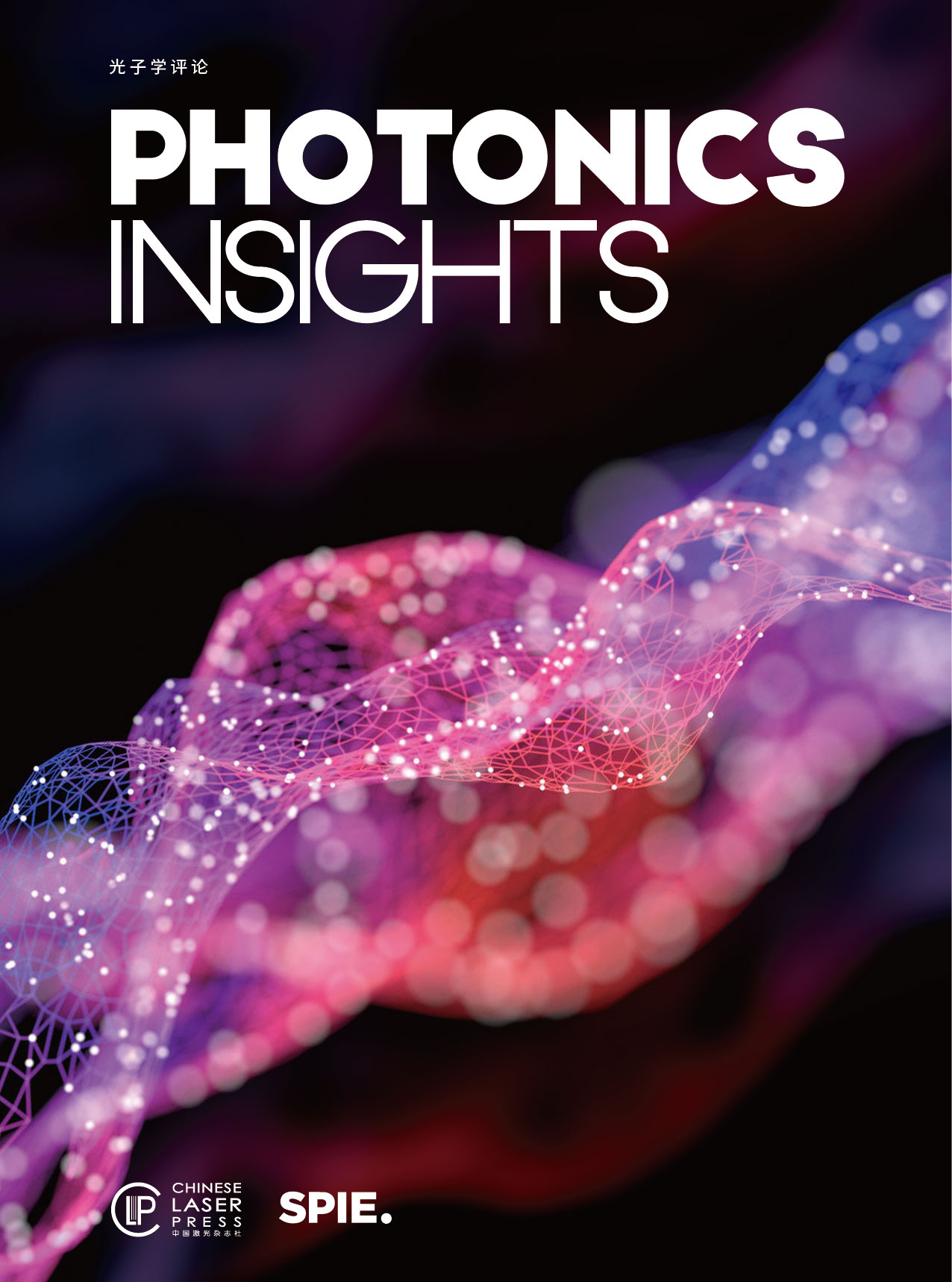Information metasurfaces develop from digital coding and programmable metasurfaces, the initial idea of which is to design the metamaterials structure pattern in a digital way. Compared to previous research focusing on the material characteristics and function realization, information metasurfaces discuss from the perspective of information science and produce a totally digital pattern on metamaterial configuration by digital and discrete meta-element.
Theories and application systems of information metasurfaces, such as the scattering field expression of digital coding pattern, convolution theorem, and information entropy of the information metasurfaces, have been gradually established for other expansive applications.
At the same time, artificial intelligence has also developed rapidly and has been applied in various fields, among which the representative machine learning and deep learning technologies can be deeply integrated with metamaterials as a new design method and physical framework. To better show the mutual developments of metamaterials and artificial intelligence and their integration, a development timeline is shown in Fig. 1.
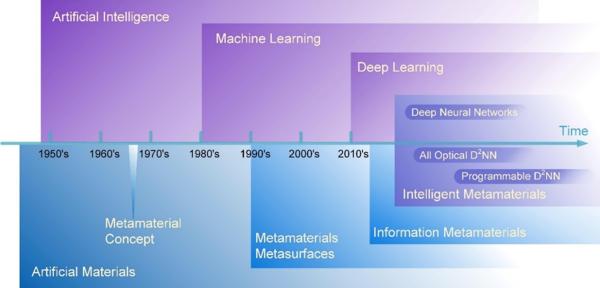
Fig. 1. The development of metamaterials, artificial intelligence, and their integration to result in intelligent metamaterials.
Recently, a team of scientists led by Prof. Tiejun Cui at Southeast University was invited by Co-Editors-in-Chief, Prof. Lei Zhou and Prof. Din Ping Tsai, to contribute a comprehensive review paper entitled "Information metasurfaces and intelligent metasurfaces", which was published on the first issue of Photonics Insights. (Qian Ma, Che Liu, Qiang Xiao, Ze Gu, Xinxin Gao, Lianlin Li, Tie Jun Cui. Information metasurfaces and intelligent metasurfaces[J]. Photonics Insights, 2022, 1(1): R01).
Digital coding metasurfaces use the digital codes "0" and "1" (with opposite phase responses) instead of the medium parameters, and control the EM fields and waves using different coding sequences. By controlling the active devices integrated on the metasurface through field programmable gate array (FPGA), the digital coding metasurface has become programmable, namely, the programmable metamaterials, which provides a new dimension in the time domain and brings space-time coding applications. Based on the unique features of controlling the EM fields and waves in real-time and modulating the digital information simultaneously, various functions, devices, and systems of the information metasurfaces have been achieved.
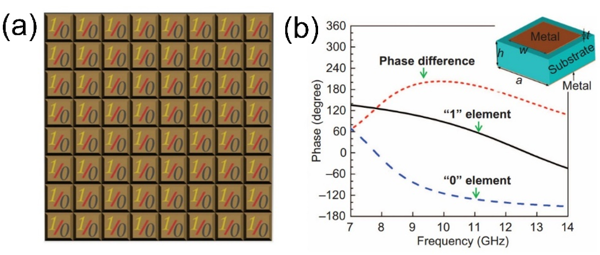
Fig. 2. The 1-bit digital coding metamaterials. (a) The 1-bit digital coding pattern of metamaterials. (b) A typical patch coding element with "0º" and "180º" phase responses, encoded as bits "0" and "1".
The earlier digital coding and programmable metasurfaces are mainly concentrated on spatial coding. Combining the space-domain and time-domain coding together, space-time-coding digital metasurfaces have been presented, which can manipulate both spatial beams and frequency spectra simultaneously in real-time. Space-time-coding digital metasurfaces explore new degrees for controlling the frequency spectra and increasing the information capacity, making it more flexible to tailor the EM wavefronts from both space and frequency dimensions. Many kinds of research have been conducted for new-architecture wireless communications based on the time-coding and space-time-coding digital metasurfaces, opening a direction for developing new wireless communication systems.
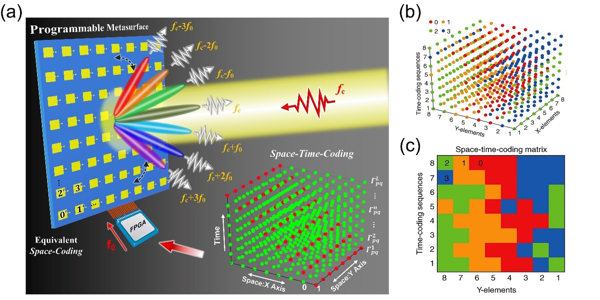
Fig. 3. The space-time coding metasurface. (a) The illustration of the space-time coding metasurface. (b) and (c) The space-time coding pattern for beam-deflection.
Parallel to the developments of metasurfaces, as the ultimate direction of information and digitization, artificial intelligence (AI) has also received extensive attention in recent years. AI technology aims to study the way of making machines imitate the action and decision-making process of human beings to solve intelligent problems. Artificial neural networks have proved to be able to handle various intelligent tasks, such as speech recognition, image recognition, automatic translation, image editing, robot control, and so on. Due to its unparallel specialty, AI has been integrated into the metasurface structure and function designs, in which the pixeled metal structure of the metasurface element can be automatically designed for arbitrary phase responses.
How to design the metasurface is one of the most important topics in this community, which includes designing meta-atoms and the whole metasurface. An unabridged metasurface consists of many subwavelength meta-atoms to exhibit various novel physical phenomena. The basic problem for metasurface design is to optimize the meta-atoms structure parameters for achieving the desired reflection and/or transmission properties. The relationship between metasurfaces and AI technologies helps automatic designs of the metasurface elements and metasurface patterns.
Before the metasurface is designed to fulfill a specific function, its meta-atom should firstly be designed to satisfy the required EM responses. Since the scale of the problem for the overall design of metasurface is usually much bigger than that for meta-atom. The intelligent designs of meta-atoms gain more attention and have been developed faster than the intelligent overall design of metasurface. Even so, recently there have been various works of intelligent designs for metasurface arrays, which present higher accuracy and efficiency than the canonical methods.
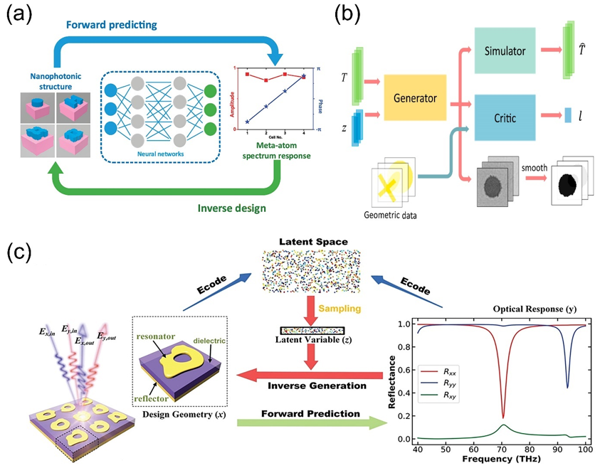
Fig. 4. The schematic diagrams of inverse ANNs. (a) The schematic diagram of an inverse ANN retrieving the relationship between spectrum response and meta-atom structure. (b) The flowchart of GAN for inverse design of 2D meta-atoms with arbitrary patterns. (c) The schematic diagram of an inverse-design GAN with a latent space.
Artificial intelligence may have a closer connection with information metasurfaces to make them smarter, which yields intelligent metasurfaces. To further attain smarter functionalities of metasurfaces to make decisions by themselves, the metasurface should have the sensing ability to collect the essential information and make decisions.
Based on this idea, Ma et al proposed the metasurfaces with self-adaptively reprogrammable functionalities, in which multiple sensors, the microcontroller unit (MCU), and FPGA are integrated to construct a closed-loop sensing feedback system for automatic decision-making. So that the metasurface can perform different functions without human instructions.
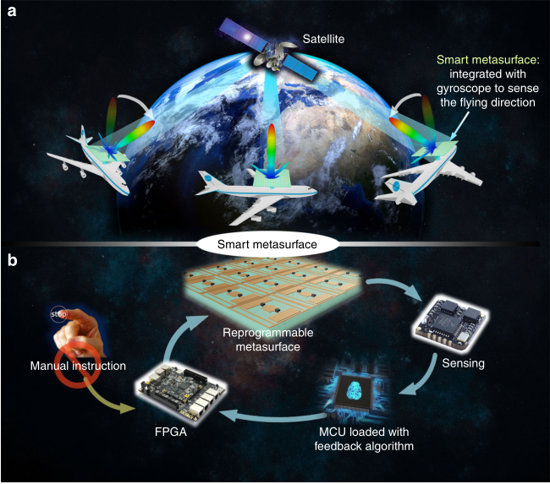
Fig. 5. The schematic of a smart metasurface. (a) Illustration of the smart metasurface with the function of self-adaption without manual instruction. (b) The feedback loop system of the smart metasurface, which is composed of a digital-coding metasurface, an FPGA, a sensor, and an MCU loaded with the fast feedback algorithm.
To explore the new architecture of computing hardware of AI, various optical neural network hardwires have been reported, yielding faster computing speed and lower energy consumption. In 2018, Lin et al. proposed all-optical diffractive deep neural networks (D2NNs) for machine learning. The multi-layer neural network is established based on five layers of optical metamaterials, fabricated using 3D printing technology. The forward-propagation of light in the presented network is intrinsically similar to the forward-propagation computing of an all-connected neural network. More importantly, the forward propagation at the speed of light enables the ultra-fast network computing capability and ultra-low power loss due to its passive structure.
Although all-optical diffractive neural networks have been demonstrated using 3D and planar structures with excellent performance, they have fixed functions once they are fabricated and the training process is still performed on conventional computers.
To solve the problem, Liu et al. proposed a fully programmable artificial intelligence machine (PAIM) using multiple layers of information metasurfaces, which can directly receive the EM waves in free space, and achieve direct calculations in wave space by adjusting the transmission gains of meta-atoms with a wide dynamic control range. Moreover, the characteristics of light-speed calculation are maintained in the fully programmable diffractive architecture, which significantly expands its application potential.
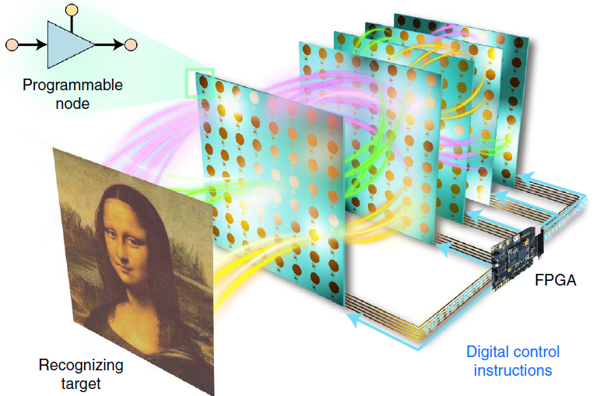
Fig. 6. A reprogrammable D2NN platform. PAIM is a real-time and re-trainable intelligent machine, which is composed of an array of programmable metasurfaces installed with several FPGAs to control the gain factor of each artificial neuron.
The digital coding and programmable metasurfaces not only combine electromagnetic physics with digital information but also incorporate the idea of encoding into the design of electromagnetic functions and the representation of information, thus forming the new direction of information metasurfaces. During this period, the wide application of artificial intelligence gives birth to the related research on the intelligent design of metasurfaces, which is also closely related to the future development of information metasurfaces. They envision that future research on the information metasurfaces will be focused on the reconstruction of traditional Shannon information theories by deeply combining digital information with electromagnetic fields.

